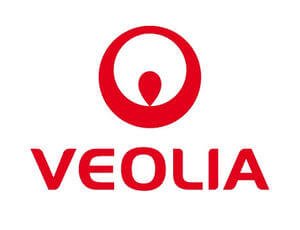Published October 25, 2022
INDUSTRY
Environmental Protection
SERVICES
Cloud migration

Veolia Migrates 34 Business-Critical Applications to AWS for Improved Scalability and Faster Data Access
Veolia Australia and New Zealand is part of the global Veolia Group, which is committed to ecological transformation through sustainable waste, water, and energy initiatives. Veolia has 179,000 employees worldwide who help develop access to natural resources and preserve and replenish available resources.
Business Needs
Veolia has been pursuing digital transformation for several years and looked to migrate its Citrix environment to the AWS Cloud in 2019. With the help of AWS Partner Mantel Group, Veolia migrated 34 applications for improved agility and project delivery, while integrating data for higher visibility.
Enhancing Security and Resilience with Partner Support
Security was top of mind during Veolia’s migration planning. We worked with Veolia’s internal cloud team to first set up an AWS Landing Zone with multi-Availability Zone (multi-AZ) architecture to strengthen the business’s disaster recovery capabilities. Veolia also implemented Amazon GuardDuty for intelligent threat protection and AWS Backup to centralise and automate backup across AWS services.
Veolia’s cloud team worked closely with Mantel Group, following a structured training path in addition to having frequent ad-hoc discussions on building in the cloud using the landing zone concept.
“[Mantel Group] brought their expertise and experience in leading the cloud migration, and our team members benefited from a lot of hands-on learning along the way,” says Nandavaram.
Mantel Group used the CloudEndure framework to support the migration of 34 business-critical Veolia applications AWS over a period of 4–6 months. When the scope of the Mantel Group-led project was completed, Veolia’s internal team was able to independently migrate several additional, complex enterprise applications to AWS during the subsequent 6–8 months. Veolia has continued to evolve its AWS Landing Zone environment since implementation.
Lower SQL Licensing Costs with Increased Flexibility
Some of Veolia’s technology stack is running on the Microsoft operating system, with SQL database servers, .NET applications, and Active Directory. As part of the migration process, Veolia worked with Mantel Group to retire some databases and consolidate its remaining SQL databases running in Amazon Elastic Compute Cloud (Amazon EC2), to reduce licensing costs and management overhead.
“We had a wide variety of enterprise SQL licenses in our technology mix. Leveraging the skills of our internal teams and [Mantel Group], we were able to rationalise our SQL spend by optimising licensing versions in some cases, to save on database costs,” says Nandavaram. With [Mantel Group]’s help to either re-platform, retire, or refactor SQL applications, Veolia is saving 67 percent on its database spend since migrating to AWS.
Veolia also adopted Amazon Relational Database Service (Amazon RDS) for enterprise workloads including those developed in house as well as commercial off-the-shelf applications. “The business requirements evolve very quickly for each application. AWS gives us the flexibility to try different approaches until we find the optimum configuration, something that would’ve taken weeks or months on premises,” Nandavaram explains.
Mature CI/CD Pipeline with Infrastructure as Code
During the six-month implementation period with Mantel Group, Veolia also accelerated infrastructure deployment by enhancing its continuous integration/continuous deployment (CI/CD) pipeline and relying more heavily on infrastructure as code. “We’re now able to spin up instances on the fly using automation we can copy and adapt to each deployment. [Mantel Group] played an important role in bringing more maturity to our CI/CD approach,” Nandavaram says.
Standing up a Citrix environment now takes Veolia about 1 hour using infrastructure as code; previously this was a tedious, multi-day exercise for Veolia engineers. “Velocity is key. We no longer follow the software development life cycle approach, which increases our agility,” adds Nandavaram.
Facilitates Updated, Self-Service Reporting with Data Lake
To support its second pillar of digital transformation—data for business—Veolia built a data lake using Amazon Simple Storage Service (Amazon S3), AWS Glue, Amazon Athena, and AWS Lake Formation. The data initiative occurred in parallel with the migration of core systems to AWS. Data from the company’s various data sources powers reporting dashboards used across the organization.
“Our systems are integrated on the AWS Cloud to transfer data daily across business units whereas data syncs previously took weeks to extract and ingest on premises,” Nandavaram says. Furthermore, employees can visualise continually updated project data and customise dashboards to suit their reporting requirements without involving Veolia’s IT team. This self-service visualisation and analytics capability empowers teams to make data-driven decisions faster.
Solutions Provided
- AWS Landing Zone
- Amazon GuardDuty
- Amazon Relational Database Service
- Amazon Simple Storage Service
Benefits
- Enhances security with cloud-native tools
- Stands up Citrix environment in 1 hour instead of multiple days
- Reduces SQL database spend by 67%
- Improves visibility into data with self-service reporting dashboards
What our clients are saying
”"[Mantel Group] brought their expertise and experience in leading cloud migration projects, and our team members benefited from a lot of hands-on learning along the way. We’re now able to spin up instances on the fly using scripts we can copy and adapt to each deployment. [Mantel Group] played an important role in bringing more maturity to our CI/CD approach. AWS also gives us the flexibility to try different approaches until we find the optimum configuration, something that would’ve taken weeks or months on premises.”
Pradeep NandavaramVeolia Australia and New Zealand Head of Infrastructure & Cloud